Posted by Beth on Wednesday, Oct 17, 2018
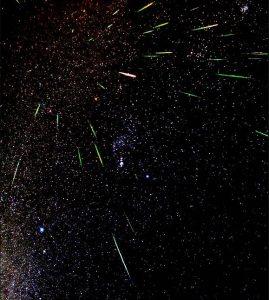
If you’re not often outside late at night, you might not be aware that something pretty special has been going on this week. The 2018 Orionid Meteor Shower began on October 15 and ends October 29th. Peak nights for viewing the meteor shower this year are this weekend! Prime viewing time will be around around 2:00 a.m Saturday and Sunday, as the moon will be nearing the horizon. You should be able to see at least a few meteors during any night the sky is clear during the last half of the month.
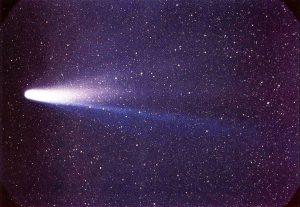 The Orionids happen every year in late October when the Earth passes through the stream of ice particles and rocks trailing Haley’s Comet. Haley’s Comet has a highly elliptical 75.5 year orbit around the Sun. It last passed through the inner part of the solar system in 1986. Each time it passes the Sun a bit of the ice on the comet melts and rocks and larger chunks of ice break off and join the stream of debris following the comet.
The Orionids happen every year in late October when the Earth passes through the stream of ice particles and rocks trailing Haley’s Comet. Haley’s Comet has a highly elliptical 75.5 year orbit around the Sun. It last passed through the inner part of the solar system in 1986. Each time it passes the Sun a bit of the ice on the comet melts and rocks and larger chunks of ice break off and join the stream of debris following the comet.
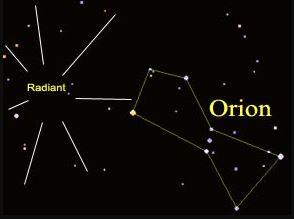
The Orionid Meteor Shower gets its name from the fact that the point in the sky that the meteors appear to originate from – called the Radiant – is just next to the constellation Orion.
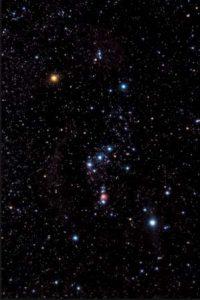 Orion – named for the hunter in Greek mythology – is easily recognizable in the night sky if you look for three bright stars close together in a strait line – this is “Orion’s Belt.” (See the yellow highlight below.)
Orion – named for the hunter in Greek mythology – is easily recognizable in the night sky if you look for three bright stars close together in a strait line – this is “Orion’s Belt.” (See the yellow highlight below.)
Orion is one of the most prominent constellations in the sky. Due to it’s location on the celestial equator, it can be seen from all over the world. (The celestial equator is an imaginary line projected in space directly above the Earth’s equator.)
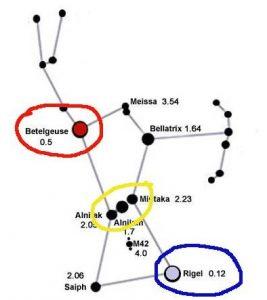
The two brightest stars in Orion are the blue-white supergiant Rigel and the red supergiant Betelgeuse.
You have two more chances to view meteor showers in 2018. The Leonids will peak on November 17th and 18th and the Geminids on December 13th and 14th. Cross your fingers and hope for clear skies in Iowa.
To learn more about Star Gazing, visit the books at 523.8 on the second floor.


Added by Beth